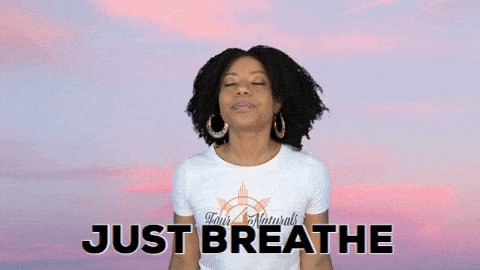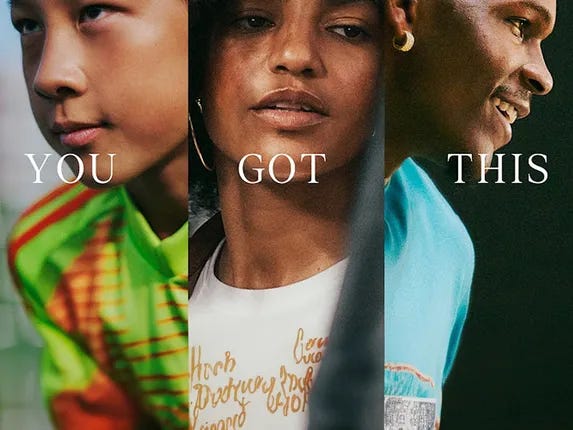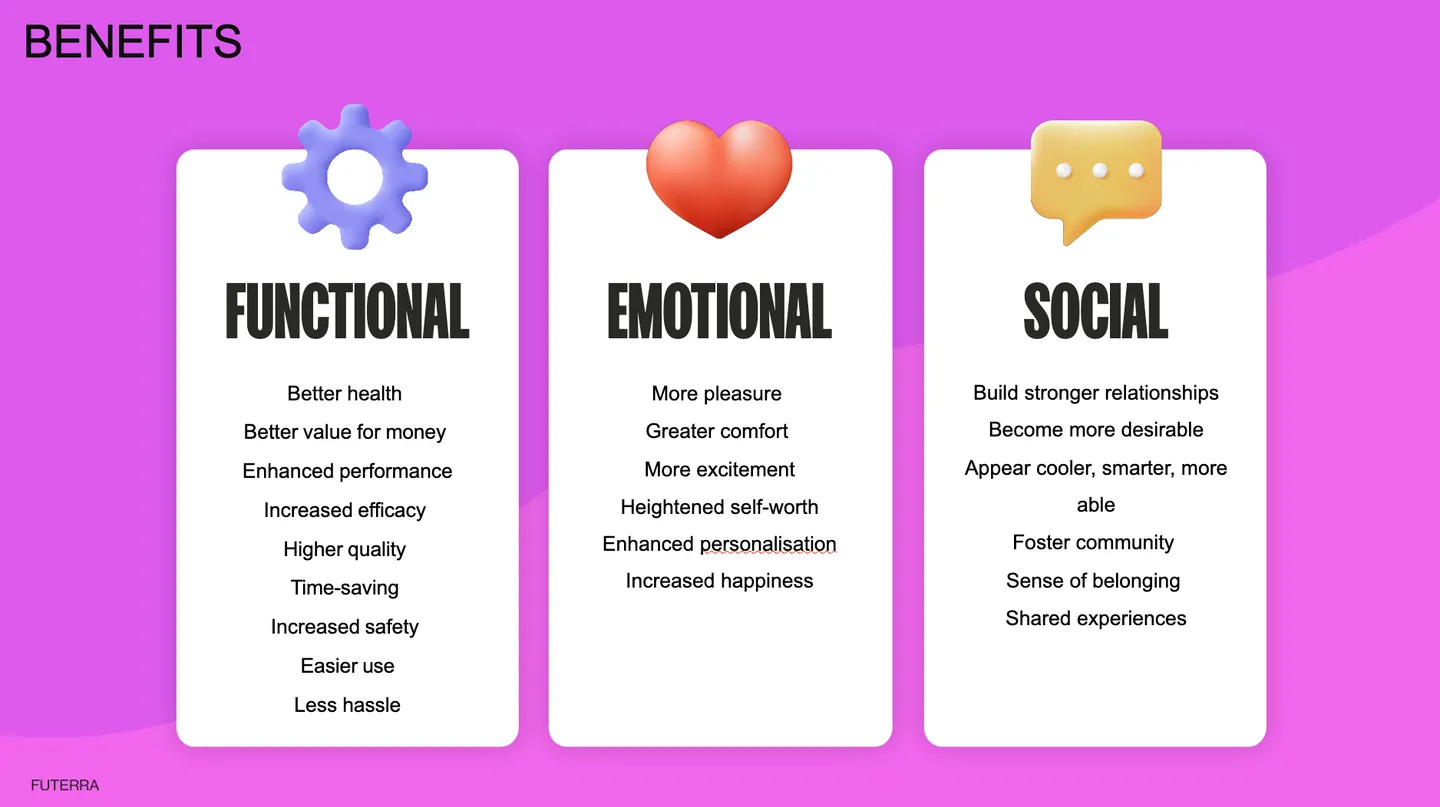🎭 Entertain or Die - Brand Fit 2025
People no longer pay attention to advertising. How can we make a brand desirable? How do we make our communication emotional? And how do we sell sustainability without it sounding like a sacrifice?
Hi 👋 I’m Florian Schleicher. This is the FutureStrategies newsletter of FUTURES. Thank you so much for reading along 💚
When was the last time you watched a commercial to the end?
When was the last time you really read a newsletter?
When was the last time you changed your buying behavior?
2025 shows us one thing above all:
An overload of (world) news.
We feel like we're under constant stress.
Everything is so fast.
The.
All.
Time.
And it's not just us marketers who feel this way.
So do the customers we try to reach.
According to a study, women usually spend around 84 seconds evaluating a partner profile in a dating app, while men only need 58 seconds.
If we don't even pay attention to choosing a partner, then we can assume what is happening to our expensively produced and carefully considered marketing.
On a mailing 2 seconds.
On a social media post 1.3 seconds.
Our brand content is literally eaten up by people's everyday lives.
And they prefer to forget this everyday life when they are entertained.
Who hasn't experienced this?
After a long day at work, you just want to relax on the couch.
Just scroll TikTok or watch Netflix... (or both at the same time).
And escaping the omnipresent and constantly changing algorithm seems almost impossible.
“The Algorithm” doesn’t measure what people want.
It measures what people pay attention to.”
Brands will have a hard time in 2025.
This is not just a challenge for companies:
53% of all creators also think it is harder to reach their followers than it was five years ago.
People are overwhelmed by communication, choice, products, services and advertising.
Nobody wants to buy products.
And people want to buy sustainability even less.
They want to be rewarded, to feel a bit of nostalgia in uncertain times. And in essence, they want a benefit for their lives.
So what will brands have to create in 2025?
Let's take a look at that today:
1️⃣ From purchase to desire
2️⃣ Emotions on eye level
3️⃣ Green marketing reframed
This is part 3/3 of my marketing trend diagnosis for 2025.
1️⃣ From purchase to desire
Some brands are simply bought.
Others are desired.
In the incredible amount of content and choice, brands need to stand out with emotion.
Consumers are searching for a deeper meaning. The value of a product or service will increasingly be judged by its ability to evoke a profound emotional response.
We forget the majority of brands relatively quickly.
A few live somewhere in the hinterland of our consciousness. We buy and consume on the basis of habit. We buy because we want to satisfy a need.
And when we buy, 99% of the time it's a transaction.
Sounds harsh.
But unfortunately it is the reality of marketing in 2025.
Let's take a change of perspective from this dreary thought:
Think of a product that you really want. Something you want right now.
Nobody buys a Rolex because they need it. Nobody buys a house because a spontaneous desire has just arisen. We spend days, weeks, months rationalizing why we make big purchase decisions.
This is desire.
Luxury brands have been working with it for decades.
Why do we buy a Rolex but ignore sustainable products?
But what happens when we apply these mechanics to more everyday products?
What happens when we work with it around sustainability communication?
That's where we need to start.
From transaction to transformation.
From “here's what we do” to “here's what we help you do”.
In a very practical way:
🍎 What does Apple sell?
At first glance, they are electronic devices.
But at second glance, they are a tool to connect us, to express ourselves (and our status) and to pay more and more attention to our health.
It is not for nothing that the Apple Watch is the best-selling watch in the world, which incidentally communicates with one argument at the top of the list: Health.
So it's not just about the WHAT behind products, but more and more about the HOW and WHY.
“Consumers are no longer buying just items, but are buying into sensations and visions of themselves. Brands need to understand the emotional journeys of the customers and display and position their products not just as objects of desire, but as integral parts of larger lifestyle aspirations.”
© Next Atlas Unveiling 2025
A few more examples that show how an everyday product can stand for more:
🧹 Dyson - Doesn't sell vacuum cleaners, it sells innovation. Their products are not just functional, but a status symbol for design and technology enthusiasts. They position themselves as pioneers who make the home smarter.
💄 Glossier - Doesn't sell cosmetics, but community. Their products are minimalist, but the real product is the close relationship with the customer. Glossier became big because consumers felt part of a movement - beauty as self-determination.
🥘 Le Creuset - doesn't sell pots, but the dream of the perfect kitchen. The well-known colorful cast iron pots do not stand for function, but for enjoyment, tradition and the image of a French country house kitchen.
This is the reality in which marketing works in 2025.
➡️ Is your brand fit for the coming years? ⬅️
If you want to develop a strategy for your company that excites your target audience and really works, then let's talk.
I have been creating inspiring marketing strategies for corporates, political decision-makers and start-ups since 2008. With my marketing studio FUTURES, I currently work with clients from 11 countries.
2️⃣ Emotions on eye level
We want to create a brand that really inspires.
That stands for more than just a product.
How do we create this desirability for our brand?
Our marketing must entertain.
In an entertainment-driven society, our brand messages are competing with Netflix, the social media algorithm and an ever-shrinking attention span.
Not an easy piece of work.
What makes an “entertainment brand” so entertaining? How can we use this for ourselves, for our brand, our products and services?
Here are three initial steps to create this change in marketing:
1️⃣ Away from your own brand
Most brands make the same mistake: they talk too much about themselves. About their products, their features, their sustainability strategy. But the problem is - nobody is interested in your brand.
Successful brands have already understood that the focus is no longer on their own products and services. It's about becoming a source of support for their own customers.
This works best when we tell a simple, emotional story that inspires, surprises or is helpful for our target group.
The first rule of storytelling is:
Every story needs a heroine. But the brand is never the heroine.
It is only the elixir that makes the heroine successful.
Adidas, for example, does an excellent job of this with its “You Got This” campaign, which aims to boost athletes' self-confidence and reduce negative pressure in sport.
Instead of focusing on its own products, Adidas focuses on supporting and encouraging athletes to overcome their personal challenges.
The campaign shows both elite and recreational athletes overcoming self-doubt and achieving their goals with the help of mentors and positive messages. Adidas uses the slogan to convey a clear message: it's not just about the products, but about what people can achieve with their help.
2️⃣ Experiences as a product
95% of all purchasing decisions are made unconsciously on the basis of emotions - not rational arguments. People don't just buy products - they buy feelings, experiences and identity.
Brands that only focus on price or function remain interchangeable. The biggest growth drivers are emotional needs.
We live in an entertainment economy, as Frank Rose describes it in “The Sea We Swim In”:
Services are useful, but commonplace. Experiences are memorable, even magical - and worth paying extra for.
We can buy ground coffee fairly cheaply, and for a little more we can get a cup of coffee already made for us.
But if we pay more, we can get a more exotic cup of coffee, prepared by a friendly local barista, and enjoy it on the windowsill of a boutique café.
“We want goods and services to be commoditized - to get the lowest possible price and the greatest possible value. Experiences are really about time - and time has become so much more precious to us."
Brands need to design every touchpoint as an experience, not just a transaction.
LEGO does this brilliantly with various pop-ups around their Botanical Collection:
Then we have to find a simple format and keep repeating it. This is how we build awareness and trust. Repetition creates recognition and gives us a more prominent place in the minds of our customers.
3️⃣ From persona thinking to real needs
76% of consumers expect brands to understand their individual needs - not just their demographics.
Marketing departments love personas. But personas are often static, clichéd and say little about why people actually buy.
The real secret? Motivation types and needs profiles.
If we want to reach people, we need to understand them. And that doesn't (only) work with personas. We have to base our marketing on real problems, challenges and emotional insights.
Upgrade your user, not your product.
Don’t build better cameras.
Build better photographers.Kathy Sierra
A few examples:
📚 Kindle does not sell an e-reader, but the ability to always have an entire library with you. The product is not the device, but the convenience of being able to read anywhere.
📝 Notion is not selling a note-taking app, but the promise that you will never lose an important document again and that your thoughts will remain structured. Their product is productivity, not software.
🦉 Duolingo doesn't sell language courses. They sell the feeling of making progress through play.
➡️ Is your brand fit for the coming years? ⬅️
If you want to develop a strategy for your company that excites your target audience and really works, then let's talk.
I have been creating inspiring marketing strategies for corporates, political decision-makers and start-ups since 2008. With my marketing studio FUTURES, I currently work with clients from 11 countries.
3️⃣ Green marketing reframed
Last but not least: What does this mean for sustainability brands?
Sustainability has a major image problem in 2025. People think there are more important things. And in essence, they are right!
Let's forget sustainability for a moment.
What are we actually about?
We want changes in behavior that make a more positive future possible.
Better air. A healthier life. Pleasant temperatures. Prosperity. A happy society.
That is the goal.
And if we want to inspire people to achieve this, then we have to accept this too:
Most people don't buy things because they are sustainable. They buy them because they solve a problem, save money or make life easier.
“Made with less plastic” is a fact.
“Costs less” or ‘Lasts longer’ is a selling point.
Sustainability is not just a marketing strategy - it has to serve a real consumer interest. It has to meet real needs.
Everyone talks about how important sustainability is. In every survey, consumers claim how willing they are to dig deeper into their pockets for a clear conscience. And then?
Only a few sustainability brands see an effect in their sales figures.
The hard truth: there is a huge gap between statements and behavior.
🌄 That is the Value-Action-Gap.
We too often sell sustainability as a moral add-on.
As if it were an extra portion of virtue to take away.
As if we have to appeal to the “better people” in us.
But let's be honest: 99% don't buy sustainably because it's ethically correct.
We buy sustainably because something tastes good, is practical, works well, gives us a sense of status or makes our lives easier. The price must be right, the benefits must be clear.
⛔️ Sustainability as an isolated value cannot win this competition. It must be woven into the DNA of the product - not as an add-on, but as an integral part of the value proposition.
This means that we need to integrate real, tangible benefits for our target group from the outset.
Yet 45% of all award-winning sustainability campaigns in 2024 showed no benefits for consumers. No wonder brands aren't seeing the expected uplift in sales.
The days of (sorry) boring numbers and overwhelming doomsday scenarios around sustainability are over. We need pragmatism.
“People are sick of fear porn when it comes to purpose.”
SMALLWORLD
We need stories that make us look forward to a future in which “good for the planet” automatically means “good for me”.
The path must be sexy.
Every big change starts with a vision.
But often the way there is ... anything but sexy.
Sustainability? Sounds good.
Reducing emissions? Makes sense.
Saving the planet? Of course.
But what does that mean in concrete terms?
Changing supply chains. Rethinking materials. Questioning processes.
Work. Effort. Compromise.
That doesn't sound like an advertising slogan, it sounds like a headache.
And that's exactly the problem.
How do we inspire people not only for the green vision, but also for the arduous journey to get there?
A small example of how this can work:
Many people want to look fit. That's the sexy vision. But getting there - regular workouts, changing your diet - can be difficult at first glance. And yet the fitness movement still has incredible appeal. What can we learn from it?
It's not just the goal that has to be desirable, but also the process of getting there.
Patagonia turned renunciation into a status symbol.
Too Good To Go turned food waste into gamification.
Reformation made sustainable fashion sexy.
The trick?
Not to say: “It's tedious, but necessary.”
But rather: “It's cool - and also sustainable.”
That's how desirability works.
The path has to feel good. Then people will come of their own accord.
And that's how even facts that seem dry at first glance can be communicated:
If we manage to build up this desirability, then consumers will tend to perceive our products as superior (despite their higher price).
Behavioral scientist Daniel Kahnemann called this „Affect Heuristic“.
🏁 Where do we begin?
Successful marketing will still need a clear strategy in 2025.
And we start at the beginning.
With a razor-sharp diagnosis that understands our target group. In it, we identify what they really want, where we can create an authentic connection to our brand and what problem we can solve for them.
This is exactly what I am doing for many exciting clients in recent years with strategy workshops, brand positionings and archetype workshops.
Brand building and marketing will remain a challenge in 2025.
But what did David Ogilvy, co-founder of one of the world's largest advertising agencies, say?
“Any damn fool can put on a deal.
But it takes genius, faith, and perseverance to create a brand”
Thanks for reading along,















